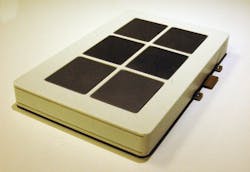We have been looking at the history of some HVDC devices such as the mercury-arc valve and the thyristor valve for the past few months. The mercury-arc valve made HVDC transmission possible (1950s), but like all technologies there was room for improvement. That came about with the introduction of the thyristor valve (1970s). This solid-state device simplified the HVDC conversion process and reduced maintenance significantly, but the thyristor, too, needed some improvement. Thyristor-based converter stations do not have independent control of active and reactive power. Also, multiterminal configurations are complex. So, engineers continued their research with other solid-state technologies.
In the 1990s they borrowed an idea from the DC drives industry, the insulated-gate bipolar transistor (IGBT). It offered several possibilities that could take HVDC schemes to the next level. The IGBT’s characteristics were between a conventional bipolar junction transistor (BJT) and a field effect transistor (MOSFET). This proved to be an ideal solid-state switching device with high impedance and high switching speeds. It also had low saturation voltages capable of handling large collector-emitter currents with almost zero gate current drive. In 1997, the first experimental voltage source converter (VSC) HVDC system was tested in Hellisjon, Sweden. It was a 3-MW, ±10-kV overhead line two level VSC. Then in 1999 ABB commissioned the first commercial VSC-HVDC project. It was a 50-MW, ±80-kV submarine cable connection on the island of Gotland in Sweden. This was followed by the Eagle Pass 36 MW 138 kV back-to-back HVDC converter station interconnecting the transmission girds in Texas and Mexico in 2000.
The new technology had demonstrated its potential. Since then, VSC-HVDC schemes have proven their controllability. They typically use pulse-width modulation control and have been utilized in the modular multilevel converter (MMC) topology. This offers several unique features such as black-start capability, high dynamic performance, simplified multi-terminal capabilities, and independent control of both active and reactive power. It has also led to the development of the static synchronous compensator (STATCOM), but more on this FACTS controller in a future column. Several power electronics experts have predicted that VSC-HVDC systems will probably replace the thyristor-based systems much like the thyristor replaced the mercury-arc systems.
About the Author
Gene Wolf
Technical Editor
Gene Wolf has been designing and building substations and other high technology facilities for over 32 years. He received his BSEE from Wichita State University. He received his MSEE from New Mexico State University. He is a registered professional engineer in the states of California and New Mexico. He started his career as a substation engineer for Kansas Gas and Electric, retired as the Principal Engineer of Stations for Public Service Company of New Mexico recently, and founded Lone Wolf Engineering, LLC an engineering consulting company.
Gene is widely recognized as a technical leader in the electric power industry. Gene is a fellow of the IEEE. He is the former Chairman of the IEEE PES T&D Committee. He has held the position of the Chairman of the HVDC & FACTS Subcommittee and membership in many T&D working groups. Gene is also active in renewable energy. He sponsored the formation of the “Integration of Renewable Energy into the Transmission & Distribution Grids” subcommittee and the “Intelligent Grid Transmission and Distribution” subcommittee within the Transmission and Distribution committee.
